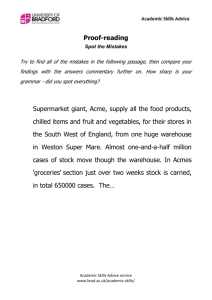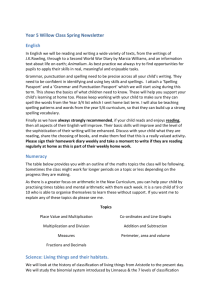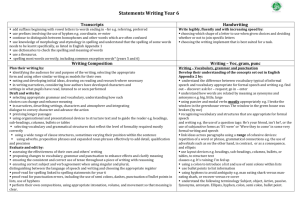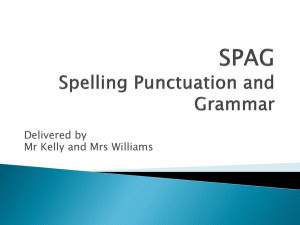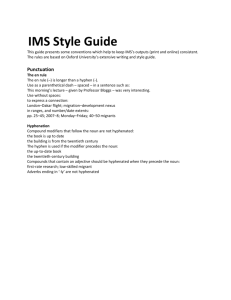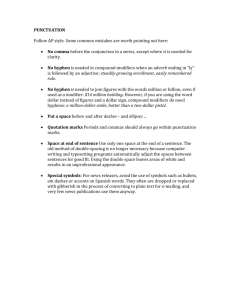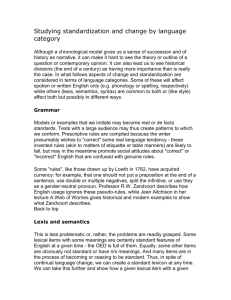Inconsistencies in Punctuation, Spelling, and Capitalization
advertisement
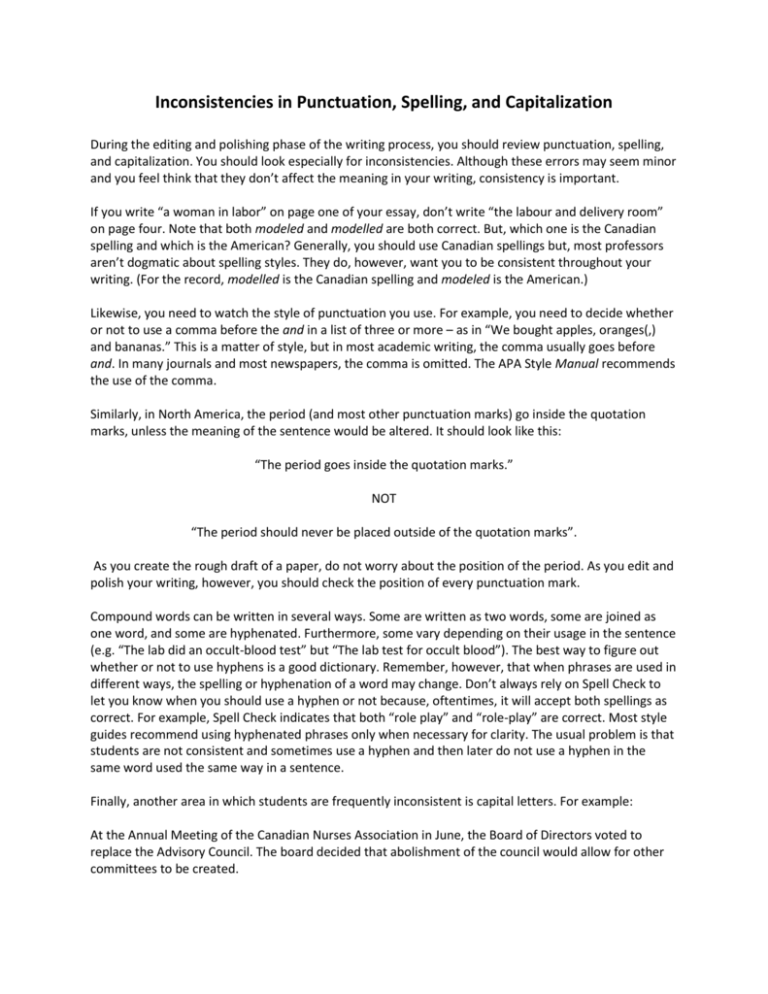
Inconsistencies in Punctuation, Spelling, and Capitalization During the editing and polishing phase of the writing process, you should review punctuation, spelling, and capitalization. You should look especially for inconsistencies. Although these errors may seem minor and you feel think that they don’t affect the meaning in your writing, consistency is important. If you write “a woman in labor” on page one of your essay, don’t write “the labour and delivery room” on page four. Note that both modeled and modelled are both correct. But, which one is the Canadian spelling and which is the American? Generally, you should use Canadian spellings but, most professors aren’t dogmatic about spelling styles. They do, however, want you to be consistent throughout your writing. (For the record, modelled is the Canadian spelling and modeled is the American.) Likewise, you need to watch the style of punctuation you use. For example, you need to decide whether or not to use a comma before the and in a list of three or more – as in “We bought apples, oranges(,) and bananas.” This is a matter of style, but in most academic writing, the comma usually goes before and. In many journals and most newspapers, the comma is omitted. The APA Style Manual recommends the use of the comma. Similarly, in North America, the period (and most other punctuation marks) go inside the quotation marks, unless the meaning of the sentence would be altered. It should look like this: “The period goes inside the quotation marks.” NOT “The period should never be placed outside of the quotation marks”. As you create the rough draft of a paper, do not worry about the position of the period. As you edit and polish your writing, however, you should check the position of every punctuation mark. Compound words can be written in several ways. Some are written as two words, some are joined as one word, and some are hyphenated. Furthermore, some vary depending on their usage in the sentence (e.g. “The lab did an occult-blood test” but “The lab test for occult blood”). The best way to figure out whether or not to use hyphens is a good dictionary. Remember, however, that when phrases are used in different ways, the spelling or hyphenation of a word may change. Don’t always rely on Spell Check to let you know when you should use a hyphen or not because, oftentimes, it will accept both spellings as correct. For example, Spell Check indicates that both “role play” and “role-play” are correct. Most style guides recommend using hyphenated phrases only when necessary for clarity. The usual problem is that students are not consistent and sometimes use a hyphen and then later do not use a hyphen in the same word used the same way in a sentence. Finally, another area in which students are frequently inconsistent is capital letters. For example: At the Annual Meeting of the Canadian Nurses Association in June, the Board of Directors voted to replace the Advisory Council. The board decided that abolishment of the council would allow for other committees to be created. There are inconsistencies in the above. In the first sentence, an “up style” is used with capital letters, but in the second sentence a “down style” is used. The words that are capitalized in the first sentence (board and council) are not capitalized in the second. Either style is correct, but you need to be consistent throughout. Style is important. If your professor instructs you to use a specific style guide, use it. Having noted all the above, it is most important that you follow the style that your teachers prefers. If your teacher has a particular way that he/she wants you to format your writing, then use that. No matter what style guide you choose to use, remember to be consistent!

